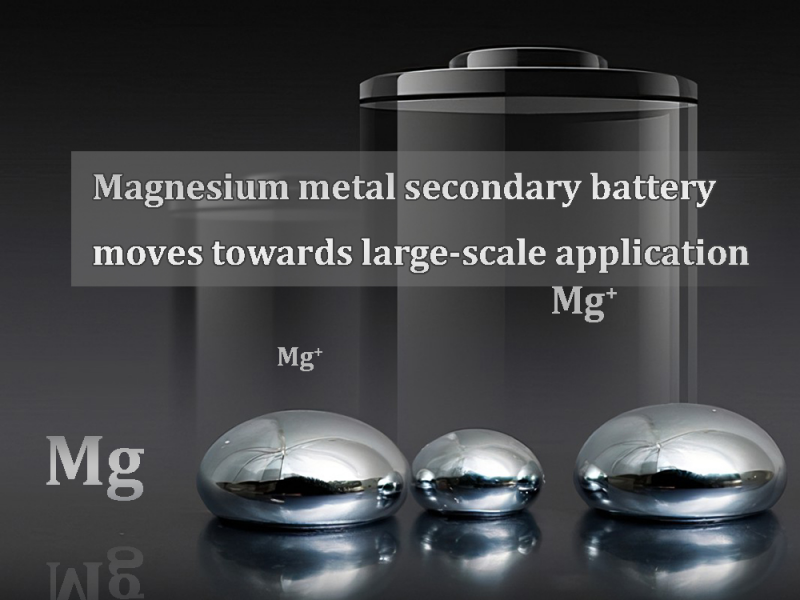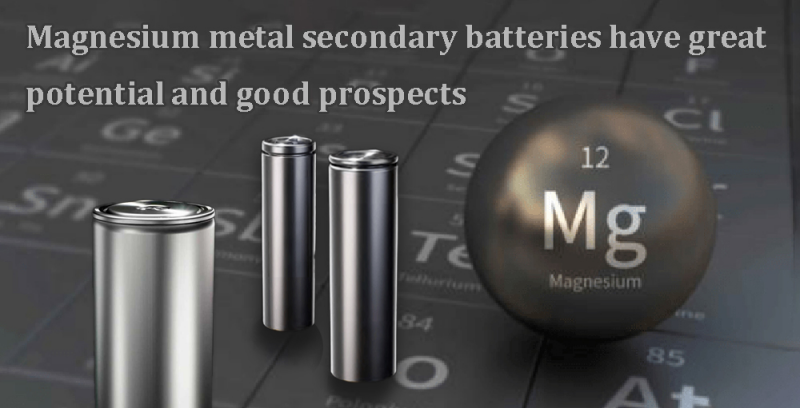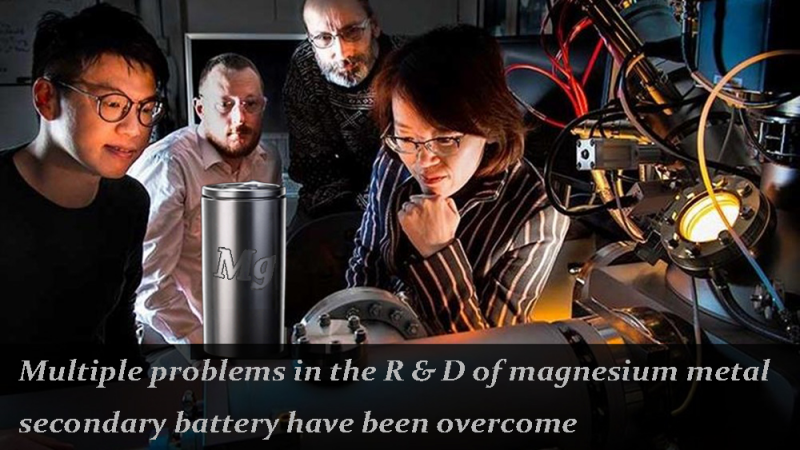
Main content:
Recently, a research team in China has carried out a lot of research work on key scientific issues in magnesium batteries, and achieved a series of achievements in key scientific issues and core materials of magnesium metal secondary batteries. When it comes to secondary rechargeable batteries, 18650 batteries are the most commonly used rechargeable lithium batteries in electronic products. If you want to know more about this type of cylindrical battery and where to buy it, please click where to buy 18650 batteries on our website for details.
1.Magnesium metal secondary batteries have great potential and good prospects
Magnesium metal secondary batteries are not a concept that emerged in recent years. The electrochemical system has been developed for more than 20 years since Israeli scientist Doron Aurbach first proposed the magnesium metal secondary battery model in 2000.Magnesium metal secondary battery refers to a recyclable battery with metal magnesium as the anode. The core of the magnesium metal secondary battery is a magnesium anode, an electrolyte and a cathode material that can embed magnesium.
Magnesium metal has extremely high volume capacity and is an excellent choice as a anode for high volume energy density batteries. Magnesium metal secondary batteries operate on the same principle as lithium secondary batteries, but are safer than lithium secondary batteries. The reason is that magnesium and most magnesium compounds are non-toxic or low-toxic, and magnesium is not as active as lithium, easy to process and operate, and also safer than lithium; magnesium batteries do not have the problem of dendrite growth similar to lithium batteries; in terms of price, due to Magnesium is more abundant in the earth's crust, so its price is cheaper than lithium.
With the implementation of the "dual carbon" policy, new energy has ushered in a leap-forward development. As one of the key equipments that are widely used in the field of new energy, the importance of secondary batteries has received attention from all parties. Although researchers have made important progress in key materials such as magnesium storage cathode, magnesium conducting electrolyte, and magnesium metal anode, there are still many basic scientific problems to be overcome in magnesium metal secondary batteries, and the industrial application is still in the early stage of exploration.

Specifically, the development of magnesium metal secondary batteries mainly faces two bottlenecks. One is that magnesium electrolyte(unlike electrolytes used in lithium ion batteries), as a key part of the battery system, plays an important role in transporting magnesium ions between cathode and anode. It is in direct contact with cathode and anode materials inside the battery system, so it is necessary to take into account the special requirements of magnesium metal anode and high-energy magnesium storage cathode at the same time, which greatly limits the selectable range of magnesium electrolyte components. It is of great significance to develop a new magnesium electrolyte system with good compatibility with the cathode and anode interface;
The second is because the divalent magnesium ion not only has two charges, but also has a small radius. This is not only the reason why magnesium ions can store more charges under the same volume condition, but also causes magnesium ions to have the characteristics of high charge density and strong polarization. The strong polarization will cause the magnesium ions to be pinned by the large Coulomb force in the lattice of the cathode material, resulting in the slow diffusion of magnesium ions. Therefore, the common intercalation cathode material structures of magnesium metal secondary batteries generally show poor reversible ability to deintercalate magnesium ions, and it is imminent to develop new efficient magnesium storage cathode materials.
2.Multiple problems in the R & D of magnesium metal secondary battery have been overcome
In response to the problem of magnesium electrolytes, the research team established a synthesis route of boron (aluminum)-based magnesium salts through a large number of screening tests and theoretical analysis, and developed a series of high-performance boron (aluminum)-based magnesium electrolyte systems, which showed excellent magnesium ion transport properties and magnesium metal anode compatibility. The researchers further expanded the optional range of magnesium electrolyte components through the interface optimization engineering of magnesium metal anodes, which greatly improved the interface compatibility between various magnesium electrolyte systems and magnesium metal anodes.

The research team also deeply analyzed the microscopic electrochemical reaction process at the interface of magnesium metal anode, and realized the efficient regulation of magnesium metal deposition/dissolution behavior, laying an important theoretical foundation for the efficient and recycling of magnesium metal anode. In addition to the above-mentioned liquid magnesium electrolyte system, in order to give full play to the high safety characteristics of magnesium metal batteries, the researchers have also designed and developed polymer-based solid-state magnesium electrolyte systems with various single-ion conductor concepts based on years of technical accumulation in solid-state lithium batteries.
The system exhibits excellent room temperature magnesium ion transport properties and positive anode interface compatibility. The researchers also successfully prepared the corresponding solid-state magnesium metal secondary battery devices, realizing the wide temperature range and long cycle operation of the magnesium metal battery, which provides sufficient technical reserves for the research and development of special power supplies suitable for extreme working conditions such as underground resource exploration and space exploration. In addition, in response to the problem of magnesium storage cathode materials, the research team focused on the transformation cathode with high specific capacity.
3.Application scenarios of rechargeable magnesium metal battery are expected to expand

Among the many emerging battery technologies under research, magnesium metal secondary batteries have become one of the battery systems with great development potential in the "post-lithium-ion battery" period with many advantages such as high volumetric energy density, high safety, high natural abundance, and low cost. At present, in terms of practical application scenarios, the team has broken through the key technical bottleneck in the production process of magnesium metal secondary batteries and developed a single battery with an energy density of 560 Wh/kg.
The magnesium-sulfur battery system designed and assembled based on the single cell has not only successfully passed the simulated pressure test in the deep-sea high-voltage environment, but also has followed the research ship of the IDSSE to achieve 30 hours of continuous stable operation in the deep-sea environment in the South China Sea, successfully realizing the demonstration application of magnesium metal secondary battery. Currently, larger application demonstration projects are also under preparation. Although the large-scale application of magnesium metal secondary batteries is still in the early stage of exploration, it has important potential in improving the safety of secondary batteries, reducing the cost of secondary batteries, and alleviating the pollution of secondary batteries. It is expected to partially replace gel battery vs lead acid in multiple application scenarios.
Related article: top 10 4680 battery companies, top10 sodium-ion battery companies